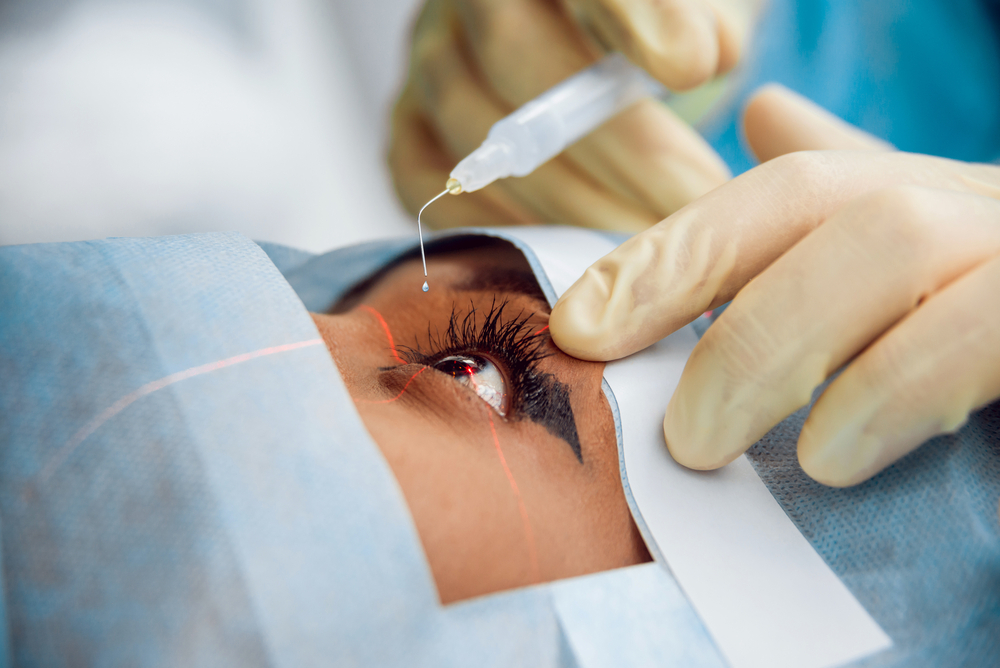
Cataract surgery is a short but transformative procedure that dramatically enhances the quality of life for patients. Demand for cataract surgery continues to grow across Louisiana and worldwide, with some researchers forecasting growth of up to 144 percent by the year 2036. If you are thinking about having cataract surgery in Shreveport, LA, it is helpful to know what to expect before scheduling the procedure. Below are ten things to know about cataract surgery and the key to your satisfaction with the procedure.
1) Cataract Surgery is the Most Common Procedure Performed by Eye Surgeons
“Cataract surgery is the most commonly performed surgical procedure, compared with any other surgery in medicine. It is also one of the safest surgical procedures.” – Ashley Behrens, M.D., Chief, Division of Comprehensive Ophthalmology, Johns Hopkins Medicine
There are roughly 28 million cataract surgeries performed worldwide each year, with nearly 15 percent occurring in the United States. There are two major reasons why the demand for cataract surgery continues to grow:
- Cataract surgery is one of the safest types of surgeries offered
- People across the world are living longer, increasing the demand for cataract surgery among older adults
2) Cataract Procedures are Performed at Surgery Centers
Cataract surgeries are typically performed on an outpatient basis by an ophthalmologist. Most procedures are completed at a local ambulatory surgery center as opposed to a hospital. This makes it easier and more convenient for surgeons and patients alike.
3) Cataract Surgery Rarely Takes More than 20 Minutes
While no two procedures are exactly alike, most cataract surgeries take no longer than 20 minutes. After accounting for time to administer a sedative or anesthetic and time spent in the recovery area, the average patient can expect to spend approximately two and a half to three hours at the surgery center.
4) Cataract Surgery Replaces a Clouded Lens with an Artificial Lens
A cataract operation can restore clear vision that has been lost because of a cataract. Cataracts are cloudy spots or blots on the lenses of the eyes. In cataract surgery, the nonfunctional lens is removed and replaced by an artificial implant called an Intraocular Lens (IOL) The IOL becomes a permanent part of your eye.
5) Sedatives and local Anesthesia are used to Minimize Pain and Help you Relax
Surgeons typically administer a sedative or local anesthetic prior to surgery. Sedatives may be administered orally or intravenously, while eye drops are administered topically to numb the pain during the procedure.
6) There are Different Types of Cataract Surgery
In Louisiana, ophthalmologists typically offer one of three types of cataract surgery. Before you schedule your surgery, your doctor will review the options with you to determine which type of procedure would be the best and safest choice for you. Here is a quick look at the three main types of procedures:
- Traditional Cataract Surgery: Traditional surgery is manually performed with a sharp blade. It is more invasive, and recovery is a bit longer.
- Laser Cataract Surgery: This type of cataract surgery involves multiple steps and uses a sophisticated laser to make precise incisions.
- LenSx Laser Cataract Surgery: This type of surgery is the newest of the three types and uses an image-guided femtosecond laser instead of a blade. Accuracy is outstanding, and recovery is usually faster because the procedures are less invasive.
7) It May Take Several Weeks for You to see as Clearly as Possible
Every patient responds to cataract surgery a bit differently. While some people report that they see more clearly a few days after surgery, it takes most people three to ten weeks to enjoy the full benefits of the procedure.
8) There are Some Risks Associated with Cataract Surgery
Much like any medical procedure, cataract surgery is associated with some risks. Before you schedule your surgery, make sure you ask your surgeon about the potential complications of cataract surgery. Here are a few risks outlined by the American Academy of Ophthalmology (AAO):
- Bleeding in the eye
- Swelling around the eye area or inside the eye
- Eye infection
- Damage to other areas of your eye
- Blurred vision or double vision
- Seeing dark shadows, glare, or halos
- Vision loss
- Detached retina
9) Understand Your Role as a Patient
Your surgeon and medical team will take every precaution and step to ensure your surgery is smooth and successful. But as a patient, you play a very important role in your recovery and results.
- Ask questions during your consultation: When you meet with your surgeon to discuss the procedure, bring a list of questions to ask.
- Follow all pre-surgery instructions: These may include wearing comfortable clothing, fasting the night before, and not wearing makeup.
- Comply with post-care treatment: Attend your eye appointments, use your eye drops and eye shield as directed, and avoid strenuous activity.
10) Choose an Experienced Cataract Surgeon
The best way to boost your satisfaction with your results is to choose an experienced cataract surgeon with a proven track record of success. By carefully evaluating your options and selecting an accomplished surgeon who uses the latest cutting-edge treatment options, you will put yourself on the path to a smooth surgical experience.
Schedule an Appointment with Louisiana’s Most Trusted Cataract Surgeons
Cataract surgery is a life-changing procedure that allows you to see the world in an entirely new light. By familiarizing yourself with the procedure and complying with treatment recommendations, you will maximize the benefits you receive through the surgery.
We invite you to contact us to discover why residents across Louisiana turn to us to perform their cataract surgery. With four convenient locations and two highly skilled ophthalmologists, we have the expertise and resources to make your experience with cataract surgery pleasant and rewarding. We look forward to helping you see the world in a whole new light!
Image Source: Roman Zaiets / Shutterstock



